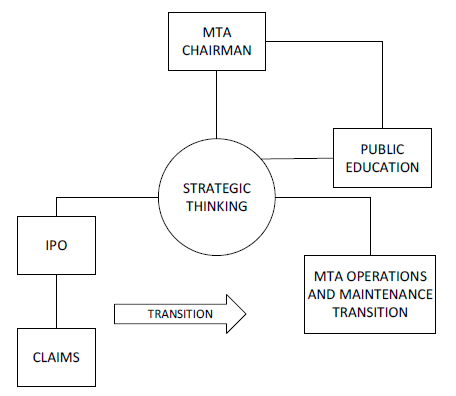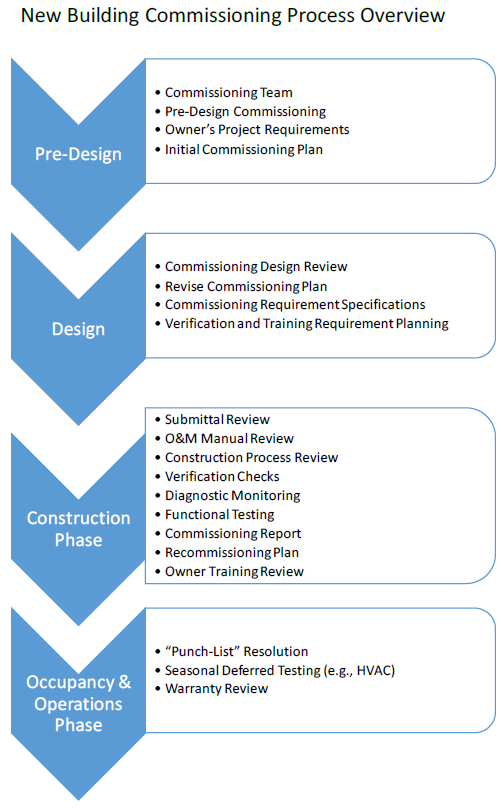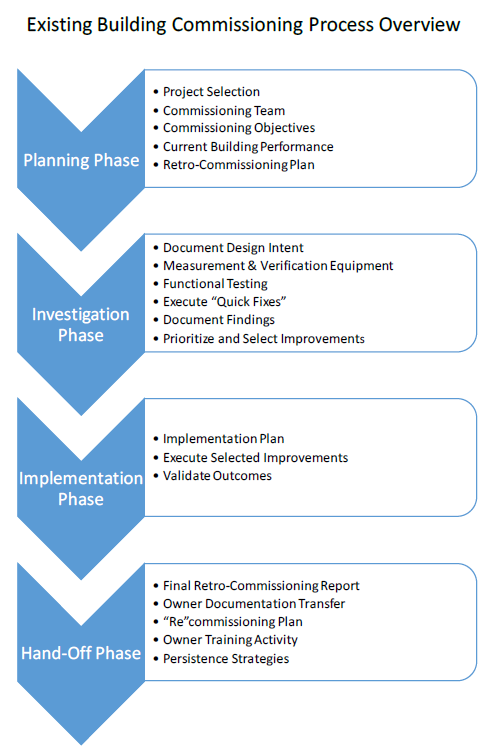9.4: Integrating New Facilities into Infrastructure Management
- Page ID
- 21162
A final commissioning task is to integrate new facilities into the regular practice of infrastructure management. Fortunately, most new facilities are provided in excellent condition, so the regular cycle of condition assessment, deterioration modelling, and maintenance/rehabilitation may not be immediately needed.
One aspect of integration is to ensure that the actual occupants or users of the new facilities are familiar with the various idiosyncrasies of the facility. Where are exits and elevators? Where are emergency supplies and first aid kits? Are offices and rooms set up in the most effective fashion?
Figure 9.4.1 shows the recommended transition steps for the commissioning of the Boston Central Artery/Tunnel (also known as the ‘Big Dig’) (Committee, 2003). This very large project replaced an elevated roadway with tunnels and added several new bridges and routes in Boston, Massachusetts. This new facility would be owned and operated by the Massachusetts Turnpike Authority (MTA), but the construction itself was largely contracted out, including a large project management team. As noted in Figure 9.4.1, an external review panel urged the MTA to adopt strategic thinking about the commissioning process needed during the transition to operations. This transition would also require a public education program to familiarize the traveling public with the new system.
 Figure \(\PageIndex{1}\): Transition to Operations of the Boston Central Artery/Tunnel ‘Big Dig’ Project. Source: Committee, 2003. Redrawn and altered by Authors.
Figure \(\PageIndex{1}\): Transition to Operations of the Boston Central Artery/Tunnel ‘Big Dig’ Project. Source: Committee, 2003. Redrawn and altered by Authors.Commissioning is an ongoing and continuous activity that forms an important component of the asset management process as described in chapter 2. Properly implemented, commissioning improves building performance, energy efficiency and sustainability over the life of the asset. The “commissioning”, “retro-commissioning”, “continuous commissioning” processes include multiple, overlapping activities as illustrated in Figures 9.4.2 and 9.4.3 below.




